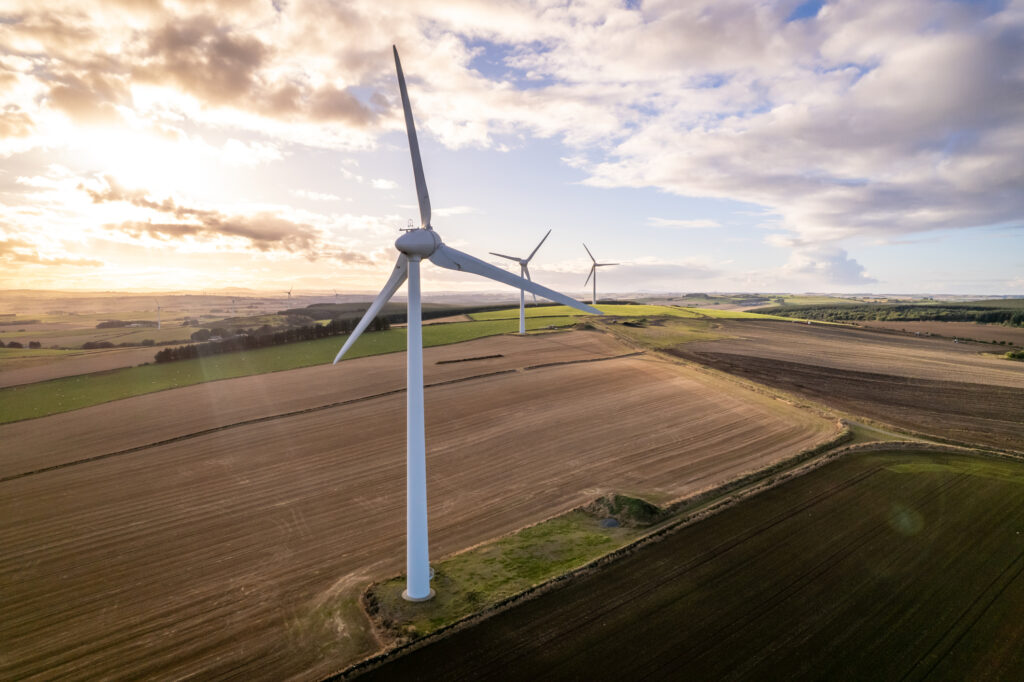The coming twelve months presents a huge opportunity to change the direction of our country. One where we can create jobs, rebuild our forgotten communities, and create a fairer, greener Scotland that works for everyone. This is the opportunity to harness our exceptional energy potential and invest in a future that spreads its benefits to all corners of our country.
It is well known that Scotland has some of the best on- and off-shore wind potential in the world, and that by harnessing it we can become a global renewable superpower. And it is not just wind — we also have massive potential for green hydrogen, solar and hydroelectric power. However, the lack of investment and joined-up thinking has left many wondering when they will see the benefits of these opportunities, and many communities have voiced their concerns that they will be left behind yet again.
When I meet businesses, community groups and other organisations one of the first things they say is that there is a lack of joined up thinking. That our sectors are not working in conjunction with each other, that government lacks a strategic approach that utilises all aspects of our society in driving forward a clean energy future. For example, because we lack the manufacturing capability to design and develop wind turbines here in Scotland, we have to import them from abroad, increasing our reliance on other countries. This is a travesty for a country with a proud industrial history, known worldwide for our manufacturing and world class industry. If we are going to utilise our energy potential we have to look at it in the round by developing an industrial strategy that builds resilience and capacity across all sectors.
This also means working across all levels of Government. If local and central Government are not working in tandem, it means that both small- and large-scale energy projects are unable to thrive. By working with our councils, Government can support innovative projects that use existing infrastructure to benefit the communities around them. For example, the Edinburgh Solar Co-operative has installed solar panels on schools and other council buildings delivering green electricity and delivering community benefits. A roll out across the country of projects like this could generate jobs, lower energy bills and meet our net zero targets.


However, all of this requires the right mix of skills and the investment in education to make this happen. This is not just about teaching young people the skills they need for the workplace, it’s about working with businesses to upgrade and utilise the skills of those already in employment. By learning from our builders, plumbers and engineers we can retain and create thousands of jobs, and develop the skills needed for the jobs of the future. If we are to achieve net zero and make the switch to cleaner energy, we have to create this framework for lifelong learning that empowers working people to take advantage of these opportunities.
Just like the opportunities for individuals, the opportunities for communities are vast. There are already countless examples of communities seeing the benefits of the renewable energy potential around them. When I visited the Western Isles earlier this year, I saw first-hand how their community owned wind farm is not only providing energy to residents on the island but by selling it back to the grid it is driving revenue that can be invested back into the local community, to build local community centres and invest in community projects. We have a growing number of such projects across the country but we are missing the huge benefits that could be delivered if there were incentives for council and cooperatively owned projects to be developed. We need to make the most of our natural resources and our homes and buildings – onshore wind, solar heat and electricity, and heat networks. The Scottish Government can and should provide further support for community organisations to take advantage of these opportunities and develop schemes that could reduce energy prices and reap the benefits for our cities, towns, and rural communities.
Unfortunately, neither of Scotland’s Governments are doing enough to make it a reality. Labour has already committed to establishing GB Energy, a publicly owned clean energy company headquartered in Scotland, and along with our Green Prosperity Plan, a future Labour Government would invest in the infrastructure, skills and technology that would create jobs, reduce prices, and achieve net zero. Our Local Power Plan would deliver the projects and benefits that in other European countries would be commonplace. A Green Prosperity Plan can only be delivered by a Labour Government in the UK and in Scotland and can’t come soon enough.
This essay from Sarah Boyack MSP was first included in a collection from the Labour Climate and Environment Forum entitled: ‘Climate, Justice and Jobs: What a Green Prosperity Plan means for the UK’.
Politics.co.uk is the UK’s leading digital-only political website, providing comprehensive coverage of UK politics. Subscribe to our daily newsletter here.












